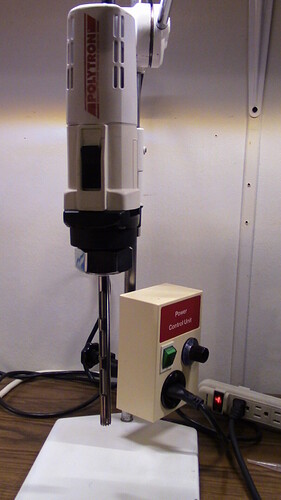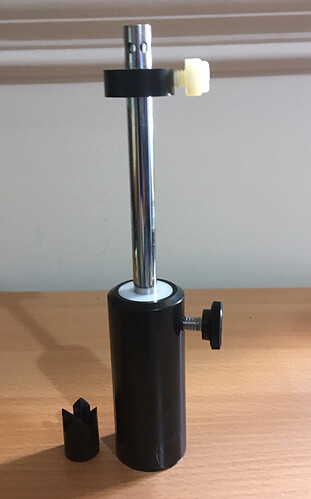Oh good, that’s what I needed to hear. I can get that way myself and end up not enjoying the experience.
Umm…
Ermmm…
/bites lip hard
I’m not saying another word for the moment. LMAO
I got an infrared ceramic glass hot plate when i first started using the GC. It made all the lights dim in my house every time it engaged the heat! Sent it back for refund and now just keep a little sauce pot with a couple inches of water on the kitchen stove to place a glass beaker of VG in to heat, and reheat as needed to mix. I stick a Milk Thermometer in it to make sure the heat is right.
It makes me walk back to the kitchen a few times, but better than a brown out! Just be selective when you choose a hot plate:)

Personally, I think taking it apart every time is a bad idea… I use a 12oz mason jar with a plastic lid and make sure it’s got clean water before I put the GC in it and turn it on. It doesn’t take long.
I don’t think its necessary and I don’t disassemble between mixes but its not difficult, or at least I tried to make it simple. I do have some cosmetic people that need to.
Below is a Polytron Kinnematica (Swiss) and a couple of their homogenizers. To disassemble these takes snap ring pliers and a press so they are made to clean in place. Notice the milled slots rather than vent holes. This is an option I plan to introduce soon. However, for Boston Round bottle mixing like we do they tend to make a mess depending on the depth of the mix. The liquid rises and if that slot is at the top of the bottle opening then it spills out. It works great for deep flasks or large containers.
These are extremely well made but incredibly expensive. The large unit retails at about $3500 and well over 5K for the complete outfit.
Cleaning is done by running in water or maybe a water/alcohol mixture.
Shown are a 12mm plus two 20 mm generators. I repair and deal in these and some other brands as well.
Thank you Luke. Shipping these internationally always makes me a little nervous. Long hollow stainless steel tubes get inspected by customs. I can imagine the reaction …OMG its a gun 
 Happy new year
Happy new year
It was the Christmas break that slowed it down a bit. Good timing for the New Year. Thanks again.
I bought the heating element Ogre uses in preparation. Just came in mail today. Looking forwards to my GC
Makes fabulous steaks too! Four hours @ 140°F. Pat dry and drizzle a little olive oil on them or use a patty of butter. Sear @ 600°F or there abouts. Serve with Horseradish Cream. (1/3 heavy cream slightly whipped, 1/3 sour cream, 1/3 horseradish)
What are you talking about?Makes steaks?
Yes, cooking steak. Preferably 1" Porterhouse.
What makes steaks that goes with GC? Me no follow 
Lol, Glad this year is almost over… Kamala wrote that she just got the heating element that I use. That is an Anova Souse Vide heater. My comment was obviously tangential. That heater can be used for cooking many things including a great steak. I guess you could use the GC to whip the heavy cream for the horseradish cream.
Oh lord, let me learn how to churn eliquid first.
The GC would likely turn that steak into puree, or liquid. 

Straight past milkshake to meatshake eh?
Yeeaah, think I’ll have to pass on that one! 

I have heard of the reverse sear. Is that what you are doing or are you searing it first?
It’s not bad.
Cooking steak Souse Vide makes it necessary to sear last. The steak is vacuum sealed and cooks in the water bath for four hours. At that point it is technically done. Perfectly cooked throughout. The sear caramelizes a thin outer layer. The juices have no opportunity to escape.



